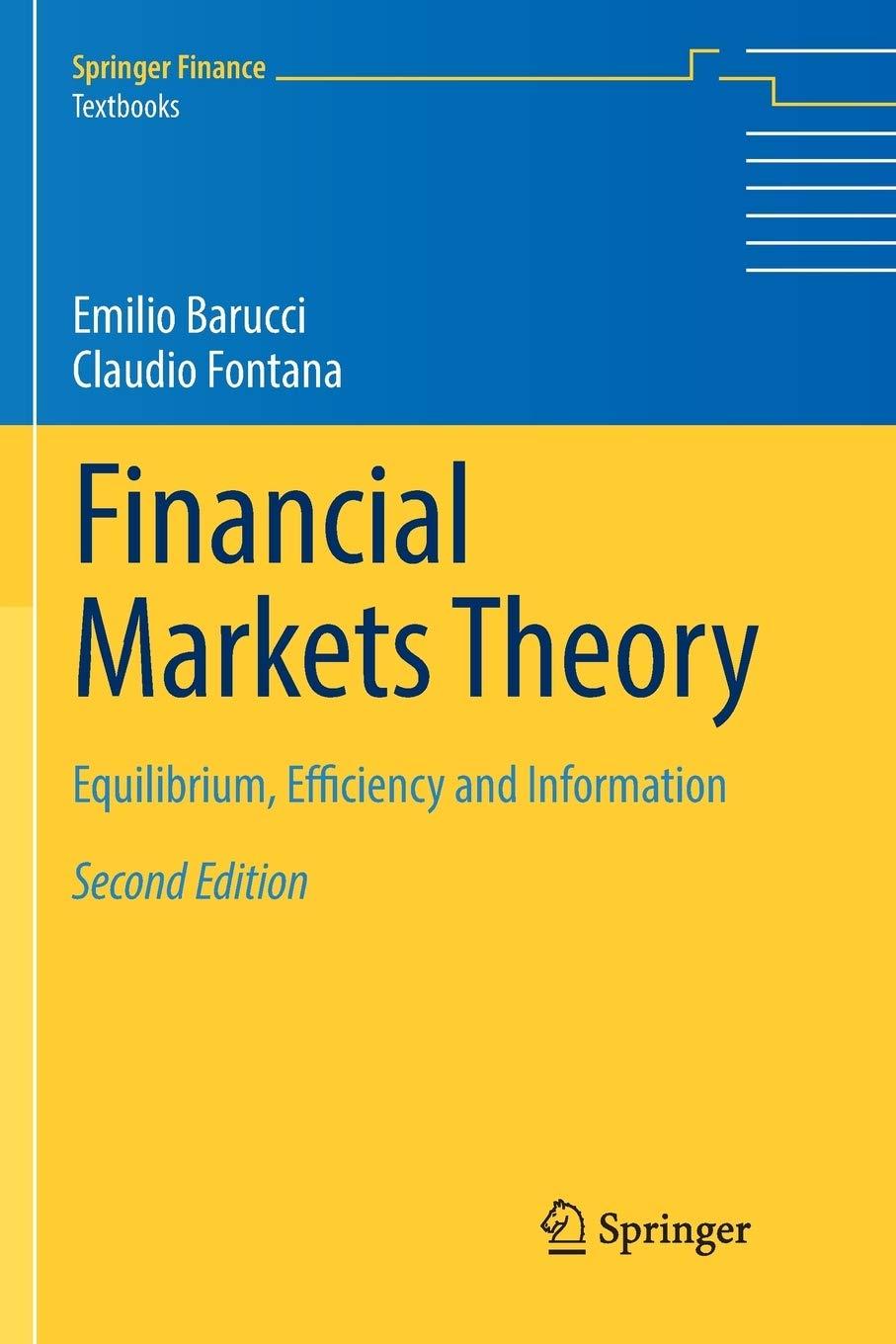Consider two risky assets with returns (tilde{r}_{1}, tilde{r}_{2}), with corresponding expected returns (e_{1}, e_{2}), variances (sigma_{1}^{2}, sigma_{2}^{2})
Question:
Consider two risky assets with returns \(\tilde{r}_{1}, \tilde{r}_{2}\), with corresponding expected returns \(e_{1}, e_{2}\), variances \(\sigma_{1}^{2}, \sigma_{2}^{2}\) and correlation \(ho\). Let \((w, 1-w)\) denote a portfolio of the two risky assets, with corresponding expected return \(\mathbb{E}[\tilde{r}]\) and variance \(\sigma^{2}(\tilde{r})\). Verify the following claims:
(i) if \(0 \leq w \leq 1\) then \(\sigma^{2}(\tilde{r}) \leq \max \left\{\sigma_{1}^{2} ; \sigma_{2}^{2}\right\}\);
(ii) if \(ho=1\) then \(\sigma^{2}(\tilde{r})=0\) for \(w=-\sigma_{2} /\left(\sigma_{1}-\sigma_{2}\right)\);
(iii) if \(ho=-1\) then \(\sigma^{2}(\tilde{r})=0\) for \(w=\sigma_{2} /\left(\sigma_{1}+\sigma_{2}\right)\);
Step by Step Answer:

Financial Markets Theory Equilibrium Efficiency And Information
ISBN: 9781447174042
2nd Edition
Authors: Emilio Barucci, Claudio Fontana





